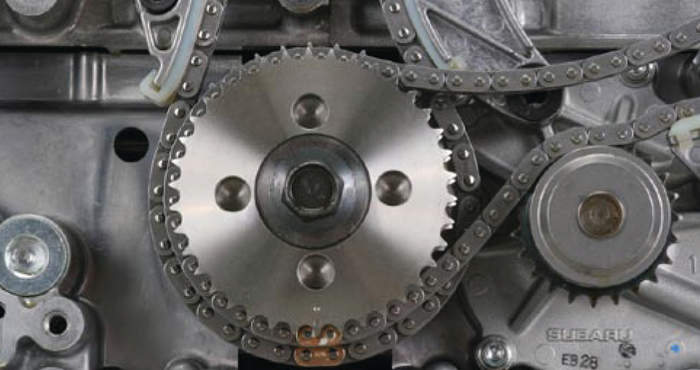Models affected: 2003-’04 Saturn VUE and ION, and 2004 L300 vehicles with 2.2L engine (VINs D, F – RPO L61).
Some customers may comment that the low coolant light is coming on and/or the coolant level is low with no external leaks visible. Low coolant may be accompanied by one of the following when the engine is cold:
• engine being difficult to start;
• engine misfire for several seconds; or
• white smoke or coolant odor from the tailpipe.
This condition may be caused by porosity in the aluminum of the cylinder head casting.
Service Procedure
Diagnostic Checks
1. Verify the low coolant level.
2. Inspect all coolant hoses and connections for coolant leaks.
• If leaks are found, replace the hoses and/or tighten the clamps as necessary and return the vehicle to the customer.
• If no leaks are found, check the engine oil for signs of coolant contamination. Add black light dye (SA9176NE) to the cooling system and start the engine. Run the engine until it is at normal operating temperature 180° F (82° C) to allow the dye to circulate through the system.
3. Pressurize the cooling system to 25 psi (172 kpa) and monitor the gauge for pressure loss during the remaining inspections.
• Inspect all of the cooling system hoses and connections for visual signs of external leaks using the black light (J42220).
• Remove the spark plugs and inspect the threads for wetness from coolant and check with black light (J42220).
• Using a flashlight, inspect combustion chambers for any sign of wetness from coolant.
4. If there is no pressure loss and no signs of internal or external leaks are found, return the vehicle to the customer.
5. If the pressure gauge shows loss of pressure and there is evidence of external leakage from the hoses or other external cooling system components, correct the leak using the appropriate service manual procedures.
• If coolant is present on any spark plug thread or visible in a combustion chamber, replace the cylinder head. (Refer to the “Cylinder Head Replacement” procedures in the appropriate 2.2 (L61) engine mechanical service manual for the vehicle being repaired.)
• If the pressure gauge shows loss of pressure and no external leaks, remove the cylinder head and inspect the cylinder liner height to block deck surface for flushness.
– If a cylinder liner is not flush with the block (lower than block surface), replace the cylinder block. (Refer to the “Cylinder Block Replacement” procedures in the appropriate 2.2 (L61) engine mechanical service manual for the vehicle being repaired.)
– If all cylinder liners are flush with the block surface, replace the cylinder head. (Refer to the “Cylinder Head Replacement” procedures in the appropriate 2.2 (L61) engine mechanical service manual for the vehicle being repaired.)
6. Verify leaks have been corrected.
Courtesy of Mitchell 1.













